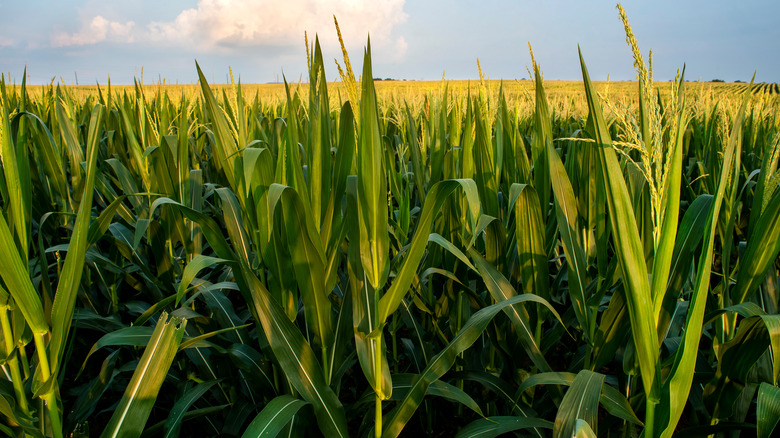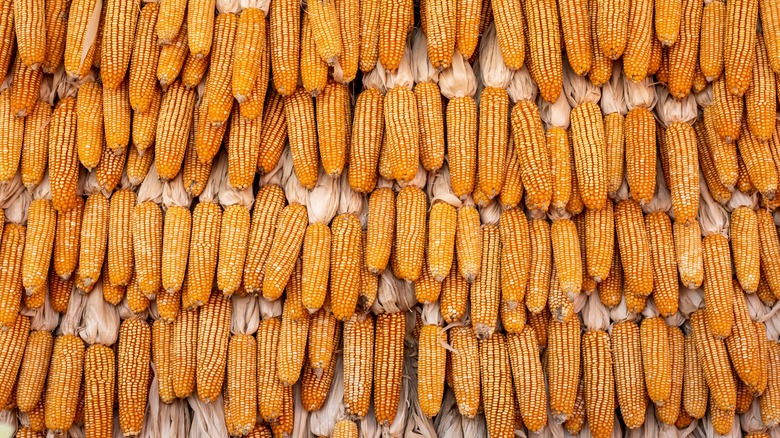The Real Reason The Price Of Corn Could Go Up Next Year
In June, there was some hope that the price of corn would diminish as the year goes on. Bloomberg predicted that since farmers planted more corn in the spring to capitalize on the prices raised by the disruption brought by the Russian invasion of Ukraine, the possible large harvest of corn would ease the pressures that have caused inflation.
Ensuring a robust corn supply has more importance than just buying lots of canned corn as a barbecue side. The Philippine news site SunStar covered how both the American Chamber of Commerce Agribusiness Committee chairman Christopher Ilagan and The Philippine Association of Feed Millers Inc. considered importing more corn as a necessary measure to cut the rising cost of meat.
However, over the past two years corn prices have been pushed up by the two factors any food news follower knows: the supply chain and the Russian invasion. When the price of corn hit a nine year high in April, CNBC explained that even before the war brought confusion, the price of corn was rising due to the same transportation costs that brought chaos to the economy.
But unlike wheat, the invasion of Ukraine did not raise corn costs because Ukraine is a major supplier. Rather, the invasion and the subsequent bans on Russia disrupted the trade of chemicals needed for fertilizer. Corn is used as a substitute. So, when the supply from Russia ended, the corn market felt yet another layer of demand.
Prices may still continue to rise
Not everyone is as optimistic as Bloomberg when it comes to the future price of corn.
The farmdoc daily, an agriculture analysis site created by the University of Illinois's Department of Agricultural and Consumer Economics, released a report on the future of nitrogen fertilizer. The price of anhydrous ammonia, which is a compound of nitrogen and hydrogen, is closely tied to that of corn prices. While corn prices have fallen to their pre-Ukraine levels, the uncertainties raised by Western Europe's dependence on Russian fuel and COVID's resurgence in China, another major fertilizer producer, could disrupt these markets.
The bigger reason for why the outlook is not as rosy as Bloomberg would have it is that farmers are currently facing raised fertilizer prices in an uncertain market. "Given this uncertainty, farmers who purchase nitrogen in late summer/early fall may wish to price 2023 production of corn," the report suggests before adding, "High corn prices are needed to cover the high nitrogen prices." If farmers do not price corn now to cover the cost of nitrogen, they could lose money when they try to sell corn later for a cheaper price. So, the expectation is that break even prices will be almost $5 per bushel of corn. For reference, an average bushel of corn was sold for $5.06 in January (per The Mid-West Farm Report). But farmers won't want to break even, meaning that bushels of corn will probably go for a higher price.

